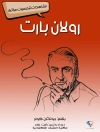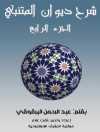Annual volume collecting new essays on a broad variety of topics in Renaissance studies.
Renaissance Papers collects the best scholarly essays submitted each year to the Southeastern Renaissance Conference. The present volume opens with two essays on Shakespeare: one considering the special force of Iago’s villainy, the other situating
2 Henry VI in relation to the ’clowning’ of the Marprelate tracts. The volume then turns to links between religion, rhetoric, technology, and theatrical practice, with interdisciplinary essays on the oral street culture of St. Paul’s Cross, cosmetics in Thomas Dekker’s
Whore of Babylon, and the mixing of genres in George Peele’s
David and Bethsabe. Following these are essays taking more traditional approachesto two of the most fascinating figures in Renaissance studies: John Donne, whose skill at epistolary insult may have been the real cause of his father-in-law’s outrage, and Pietro Aretino, whose ’afterlife’ in England is engagingly treated. The volume closes with essays showcasing a range of interests in the history of ideas: the metaphysics of light in Patrizi and Caravaggio, the representation of common law courts and special tribunals in Spenser’s
Faerie Queene, and the anthropocentrism of Sir Francis Bacon.
Contributors: Jackson C. Boswell, Jason E. Cohen, Thomas W. Dabbs, George L. Geckle, M. Thomas Hester, Delane Karalow, Robert Kilgore, Kirk Melnikoff, James Schiavoni, Andrew Tumminia.
Andrew Shifflett and Edward Gieskes are Associate Professors of English at the University of South Carolina, Columbia.
Innehållsförteckning
Aretino’s Life and His Afterlife in England
Mixing Genres in George Peele’s David and Bethsabe
Royal Prerogative versus the Common Law in A View of the Present State of Ireland and The Faerie Queene, Book 5
The Limits of Clowning in the Age of Marprelate: The Anti-Martinist Tracts and 2 Henry VI
Shakespeare’s Iago
Francesco Patrizi da Cherso, Caravaggio, and the Metaphysics of Light
Being John Donne in 1602
The Problem of the Human in Sir Francis Bacon
The Glamorous Echoes of Godly Print
’More cullors than the Rainbowe caries’: Catholics, Cosmetics, and the Aesthetic Economy of Protestant England












